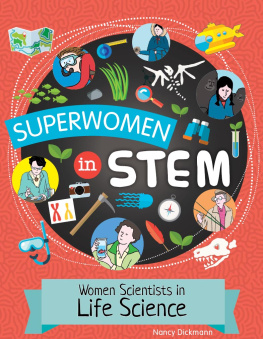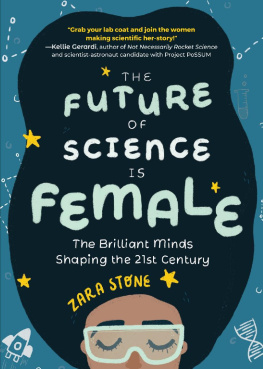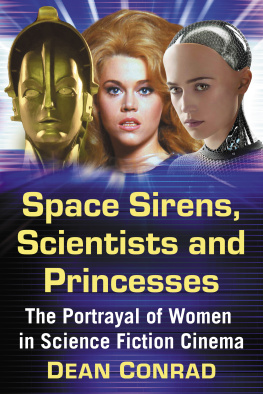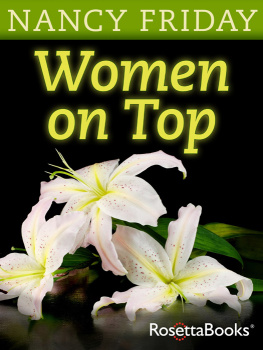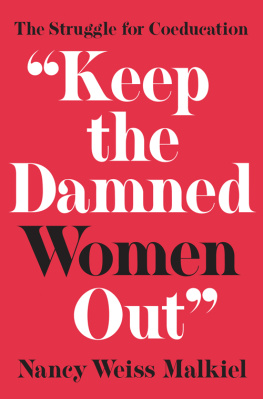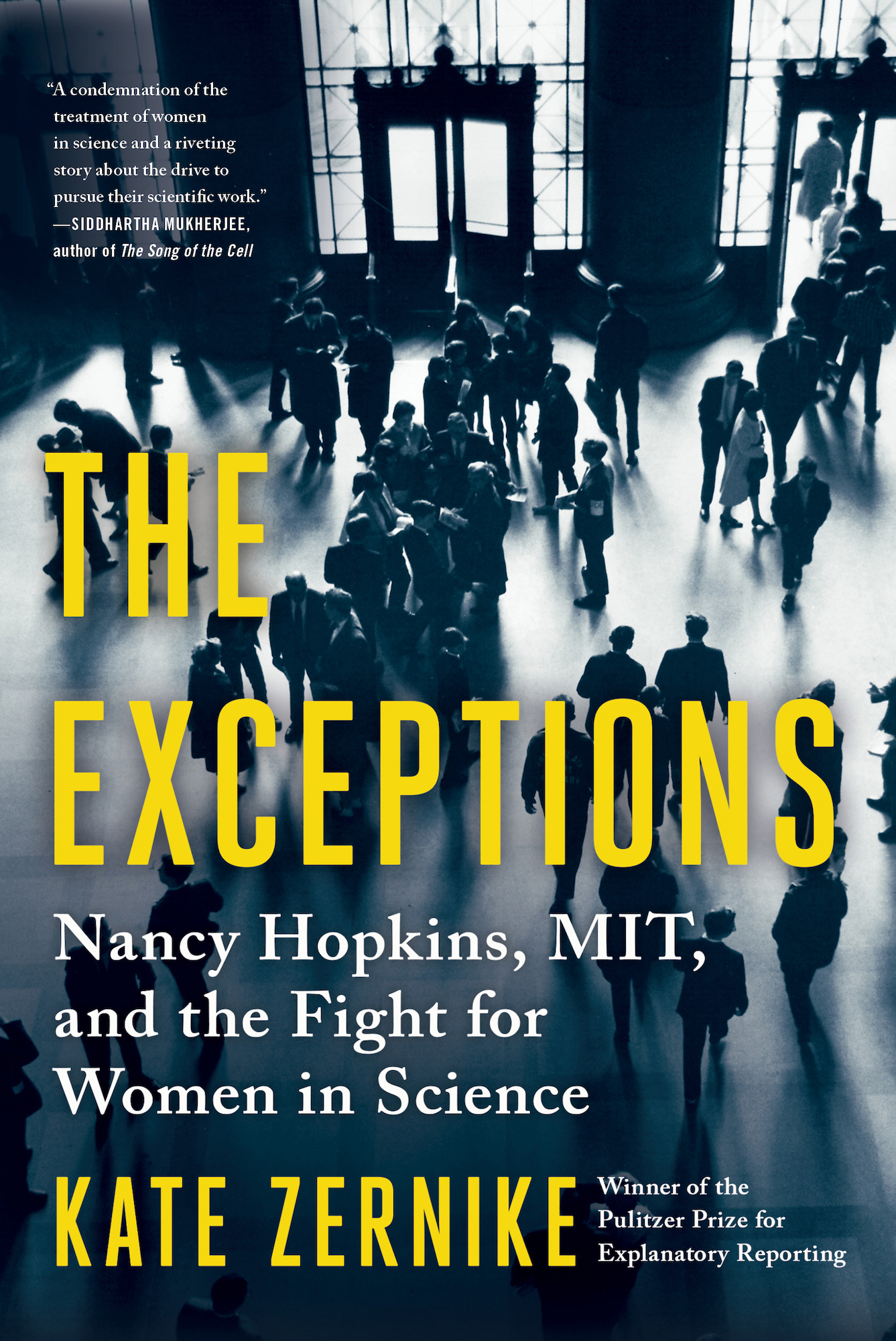Contents
Guide
A condemnation of the treatment of women in science and a riveting story about the drive to pursue their scientific work.
Siddhartha Mukherjee, author of The Song of the Cell
The Exceptions
Nancy Hopkins, MIT, and the Fight for Women in Science
Kate Zernike
Winner of the Pulitzer Prize for Explanatory Reportaing
For FZ and BBZ
Always in memory, especially here
The thought could not be avoided that the best home for a feminist was in another persons lab.
James D. Watson, The Double Helix, 1968
As for women, God help them.
Barbara McClintock, letter to Nancy Hopkins, September 21, 1976
A Note on Names and Language
A s is the custom in the settings this book describes, I use first names to refer to most of the major characters. Where two people with the same first name appear in proximity, I have used last names to avoid confusion. In all but one case these are men: while there are two Ruths, there are several Bobstwo of them Bob Bsas well as two David Bs, and two Larrys, both presidents of Harvard.
The narrative stretches over five decades, and some of the language taken from accounts of the time may strike readers as dated (and grammarians as incorrect). In particular, many institutions referred broadly to minorities, later refined as underrepresented minorities, which sometimes included what were described as Hispanics or Puerto Ricans and Mexican-Americans, but not people of Asian descent. Female students were often called girls, especially before the 1970s, when they became women students. Women who would later be called administrative assistants referred to themselves as secretaries. I have used the language of the time and tried to be specific about the definitions and reflect how they changed. I include honorifics only where they were commonly attached to someones name, even if imprecisely: Mrs. Bunting was, by right of degree, Dr. Bunting.
Prologue
I n March 1999, a story above the fold on the front page of the Boston Sunday Globe reported that the Massachusetts Institute of Technology had acknowledged long-standing discrimination against women on its science faculty. It was an extraordinary admission, as an article on the front page of the New York Times called it two days later, by which point the news had traveled around the world by radio, television, and a fever pitch of emails between female scientists who had long known they were not valued as highly as men but talked about it only among themselves, if at all. Here was one of the most prestigious institutions in the world, synonymous with scientific excellence. The discrimination had happened not in some dark age but in the 1990s, the dawn of a new millennium, decades after legislation and the womens movement had pushed open the doors of opportunity. Most women starting their careers at the time did not think bias would block them. Women who complained of discrimination typically ended up in the deadlock of he-said, she-said. Now the president of MIT was saying it was true.
That admission came about not because of a lawsuit or formal complaint, but because of the work of sixteen women who had started as strangers, working in secret, and gathered their case so methodicallylike the scientists they werethat MIT could not ignore them. They upset the usual assumptions about why there were so few women in science and math and unleashed a reckoning across the United States as other universities, philanthropies, and government agencies rushed to address the bias and the disparities that had disadvantaged women for decades. A climate change in the whole of academia, as an astronomer at the California Institute of Technology called it.
I was the reporter who wrote the story in the Globe. I had recognized that it might resonatethough I could not predict how muchbecause of my father, a physicist who had arrived in the United States in 1956 to work for a small engineering firm in Cambridge populated by MIT graduates and consultants. My parents had moved before I was born, but my father visited me often in Boston on his way to see his collaborators at Lincoln Laboratory, an MIT research center, and he had suggested that I look into the work that a physicist named Millie Dresselhaus at MITknown as the Queen of Carbonwas doing to encourage more women to enter the profession.
I had ignored him, until I heard about the women at MIT. They made me think of my mother, who was around the same age as the oldest of them. My mother had wanted to go to law school when she graduated from college in 1954, but her father surveyed his lawyer friends in Toronto and told her that no one would hire her. So she went to business school instead, up the street from MIT, enrolling in the Harvard-Radcliffe Program in Business Administration, which was the only way women could attend the Harvard Business School. That year the Wall Street Journal reported on the program in the middle column of its front page, reserved for offbeat or light features. It quoted business leaders marveling that the Radcliffe girls were just as smart as the boys, but lamenting that too many marry too soon. (Theyre too good-looking, theyre just the right age, and there are too many men at the bank.) My mother herself worked in a bank after she finished, quit to get married, and raised three children, but always regretted that she had not gone to law school. Her decision to go when I was sevenI was the youngest of her threebecame the defining event of my childhood. She inquired at Yale, where a man told her, I wouldnt let my wife go to law school. She ended up instead at Pace University.
A year or two after she graduated she was in the law library there and decided to look herself up in the Harvard Alumni Directory. There she found her name followed by a series of acronyms: BA, MBA, JD, W/M. Not recognizing the last one, she went to the key and discovered wife and mother.
My mother was then commuting three hours a day to her job at a law firm in lower Manhattan and still made dinner most nights. I was about twelve and did not fully understand her fury as she came rushing out of the law library, where I was sitting on the steps. She drove home ranting, W slash M! W slash M? In time it became a family joke. But I cant say I had fathomed it even by the time I started my own career in Boston. Across the river, Cambridge was no longer the city where my parents had their first apartment; now it was tony restaurants and out-of-reach real estate prices. Twenty-five years after coeducation, I presumed my mothers experience was deep in the past.
The MIT women made me see it was not, at least not in science. They had identified the new shape of sex discrimination, more subtle but still pervasive. I was struck by their ingenuity, and how they had enlightened the men who ran the university. Their experience became a metric for how I thought about my own life and the questions and debates around women that I would write about over the next two decades. In time, what the MIT women had described began to look less faraway, more relevant. So much had changed, and yet.
Then as now, I saw the story as one of remarkable persistence and risk on the part of sixteen women who did not consider themselves activists. Led by a reluctant feminist, they were more pragmatic than revolutionary. They were not interested in publicity; they just wanted to get on with their work. As I explored their storyand the story of women in science before and after themthe word that kept coming up, in different conjugations, was


